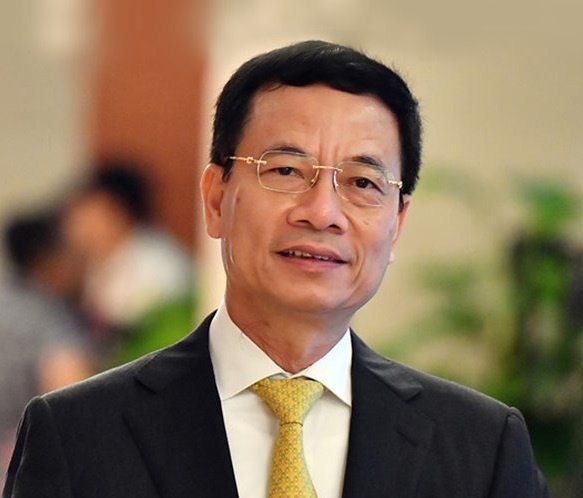Digital transformation goals set out
 |
| Nguyen Manh Hung - Minister of Information and Communications |
The challenge enabled Vietnamese digital tech firms to mature in terms of large-scale digital platforms, data security, and deployment nationwide. Especially, they became more confident in mastering technology, solutions, development, and deployment of digital products.
There was also extremely profound and real experience about the difference between IT application and digital transformation and how we strongly shift from the former to the latter. Over the past 20 years, IT applications were carried out in some places at some levels – some agencies and localities carried this out, but some did not. Now it is carried out in every sector and at all levels, from central to local level.
IT caters more to organisations, while digital transformation caters to people. IT can focus on costs, while digital transformation places it on benefits. Moreover, IT may only cover software and applications, while digital transformation covers that and much more besides, and in a more comprehensive fashion.
And while IT can often refer to simply physical computers, digital transformation takes into account the cloud and many other innovations.
The Party and the state consider digital transformation as a driving force for development in the next decades. If Vietnam wants to become a powerful and prosperous nation with a high income by 2045, digital transformation is a must. The rehearsal and preparation for digital transformation in 2021 was completed – and now it is time for the country to strongly accelerate the process.
We already have the national digital transformation programme, the National Committee on Digital Transformation, and many relevant strategies and specific tasks to be developed. To make digital transformation successful, awareness, belief, and spiritual power are the decisive factors.
Economic recovery and development is the country’s most important strategy in the upcoming years. To do it well, we need to have a new approach when it comes to some important issues.
The first is the resilience of the economy. Other pandemics could be ahead in the future, so we can increase the resilience of the economy by putting socioeconomic activities into the digital environment.
The second is increasing management capacity and national governance by digitalising these activities in a comprehensive manner.
The third factor is ensuring growth and the creation of new development spaces for growth. Digitalisation will bring about such development space, thus creating new products, markets, and consumption via digital means. If we speed up this process, we will have new growth.
Lastly is efficiency. Digital transformation creates a different version of the physical world. All the analysis, assessment, forecast, creation, and pilot of new products will happen in the digital environment, thus making them much faster and more efficient. When they work well, they will be applied in the physical world.
With the high targets and huge volume of work to be done in 2022, we need to have appropriate ways and the right approach to achieve them amid our limited resources. This correct approach will make difficult work become more feasible – and to enable it, the role of leaders is very important.
What the stars mean:
★ Poor ★ ★ Promising ★★★ Good ★★★★ Very good ★★★★★ Exceptional
Themes: Digital Transformation
Related Contents
Latest News
More News
- EVN launches major power infrastructure projects nationwide (December 19, 2025 | 18:17)
- VAL inaugurates second production line to meet domestic animal feed demand (December 19, 2025 | 16:37)
- Sun Group pioneers urban tram system in Phu Quoc (December 19, 2025 | 15:00)
- Top 10 notable events of Vietnam’s industry and trade sector in 2025 (December 19, 2025 | 14:00)
- Seven major projects launched to drive Hanoi’s next growth phase (December 19, 2025 | 14:00)
- Rare, beautiful, sustainable: the mark of iconic real estate (December 19, 2025 | 08:00)
- Mondelez Kinh Do - a chapter of purpose-led leadership in Vietnam (December 18, 2025 | 09:44)
- VNPAY services receive the highest-level PCI DSS international security certificates for six consecutive years (December 17, 2025 | 23:47)
- F&N deepens investment in Vinamilk (December 17, 2025 | 09:00)
- Long-term capital seen as key hurdle to green growth (December 16, 2025 | 08:00)

 Tag:
Tag:






















 Mobile Version
Mobile Version